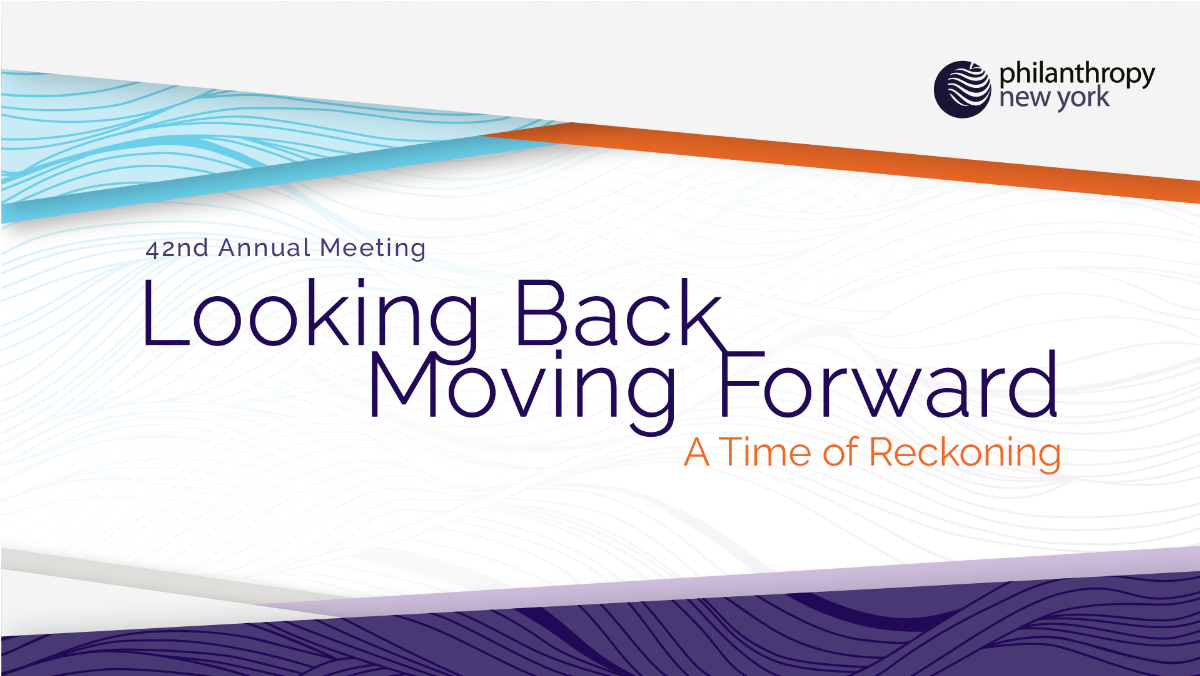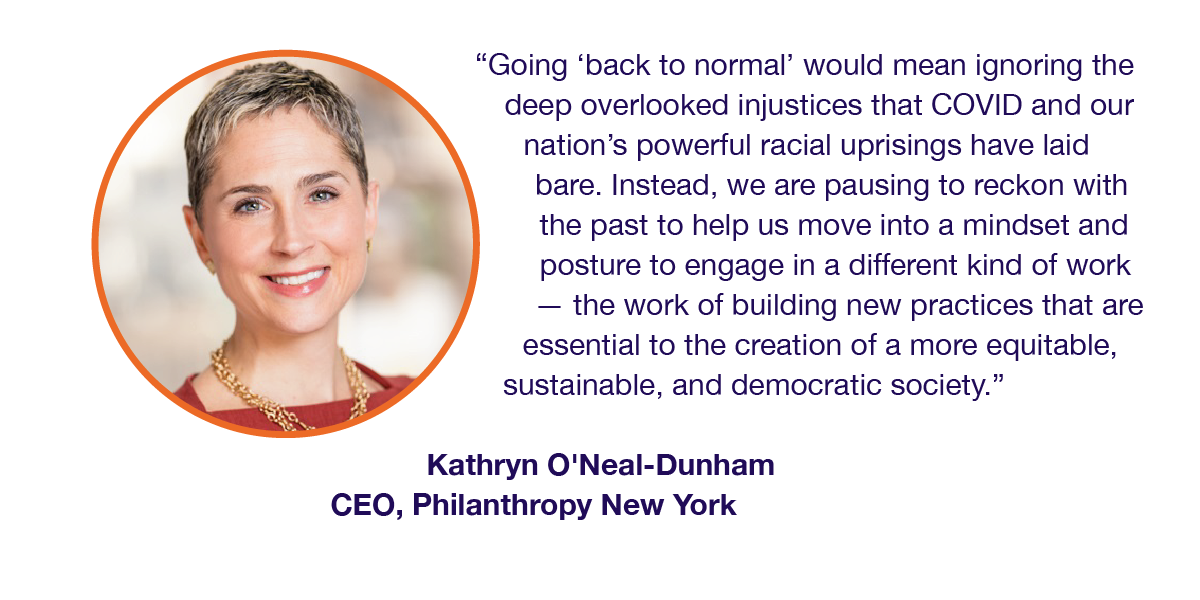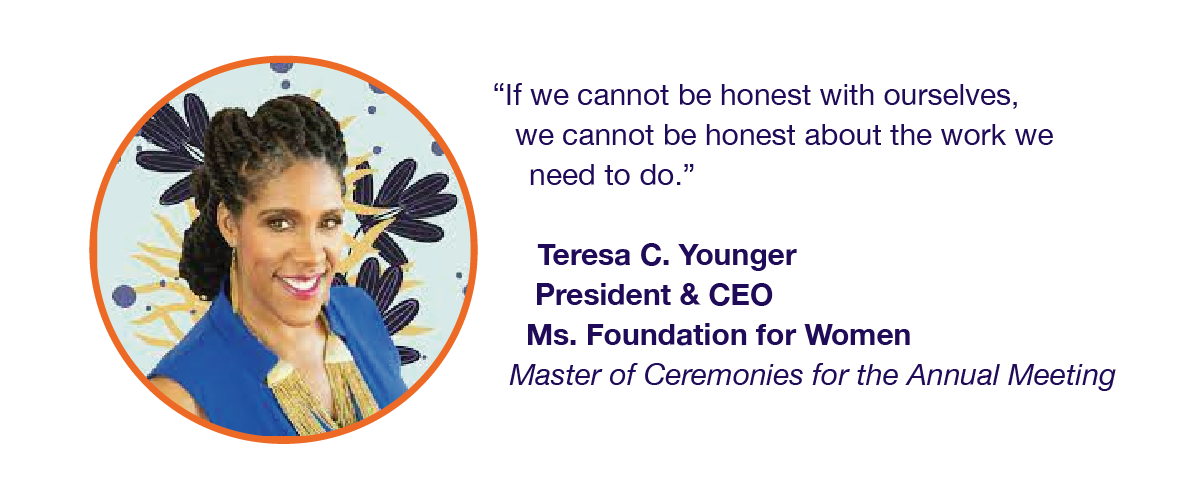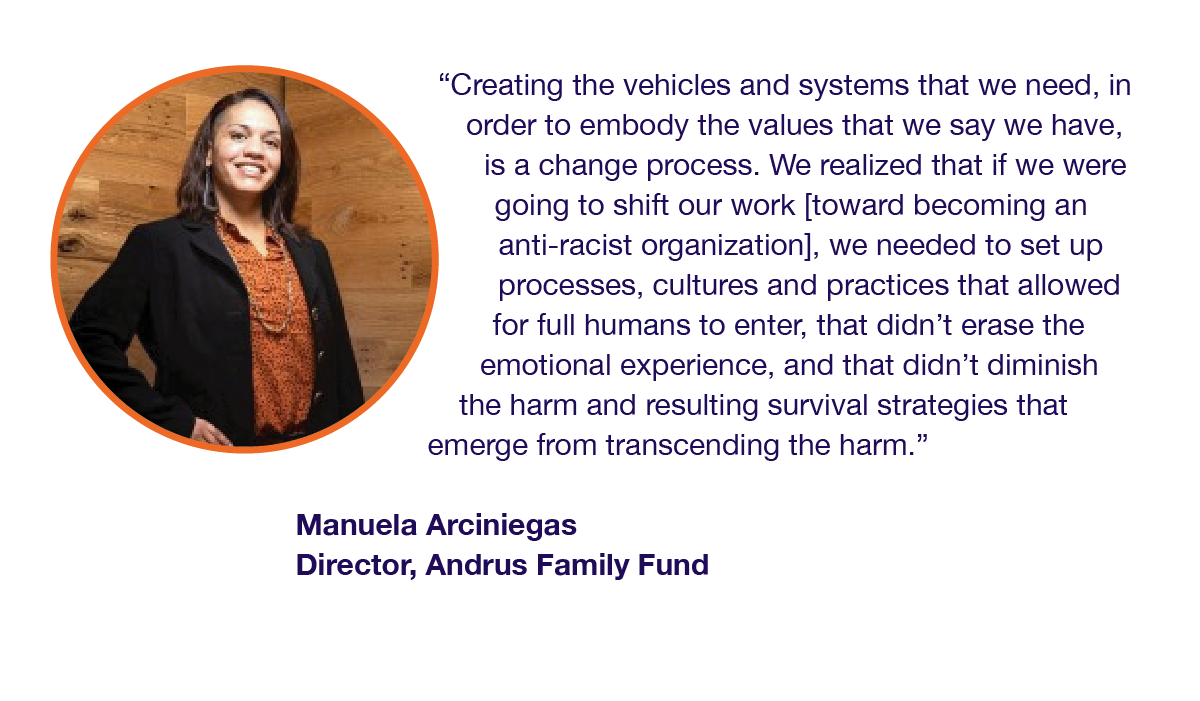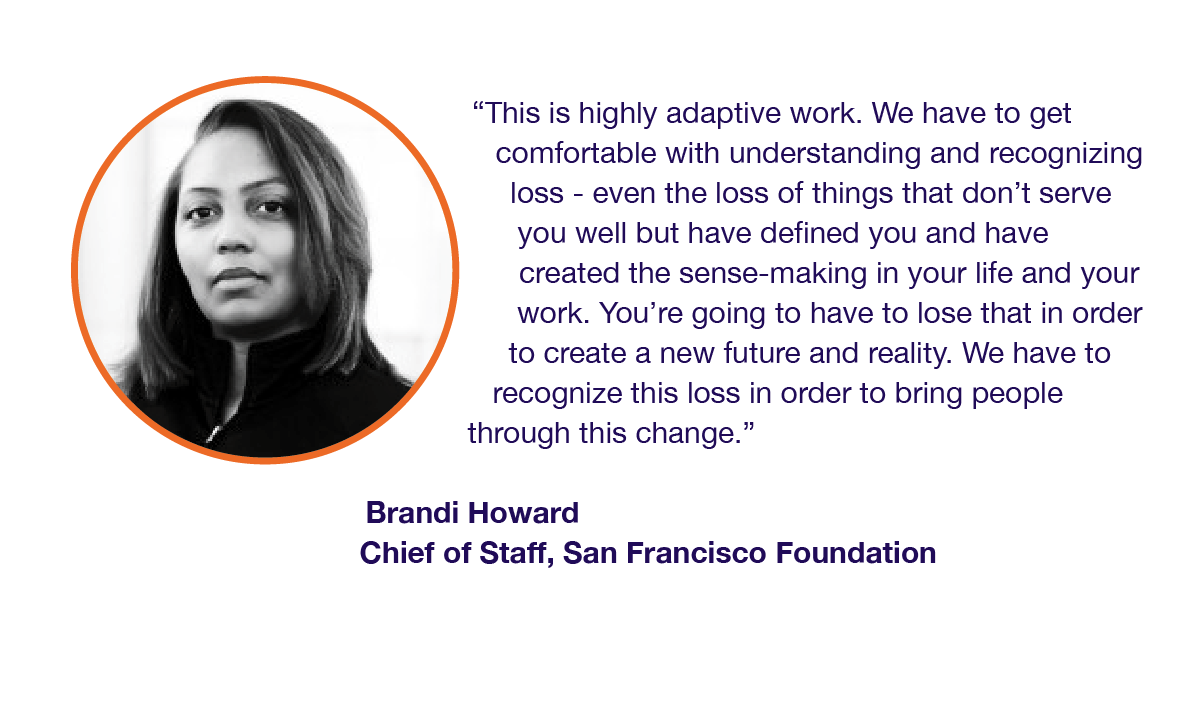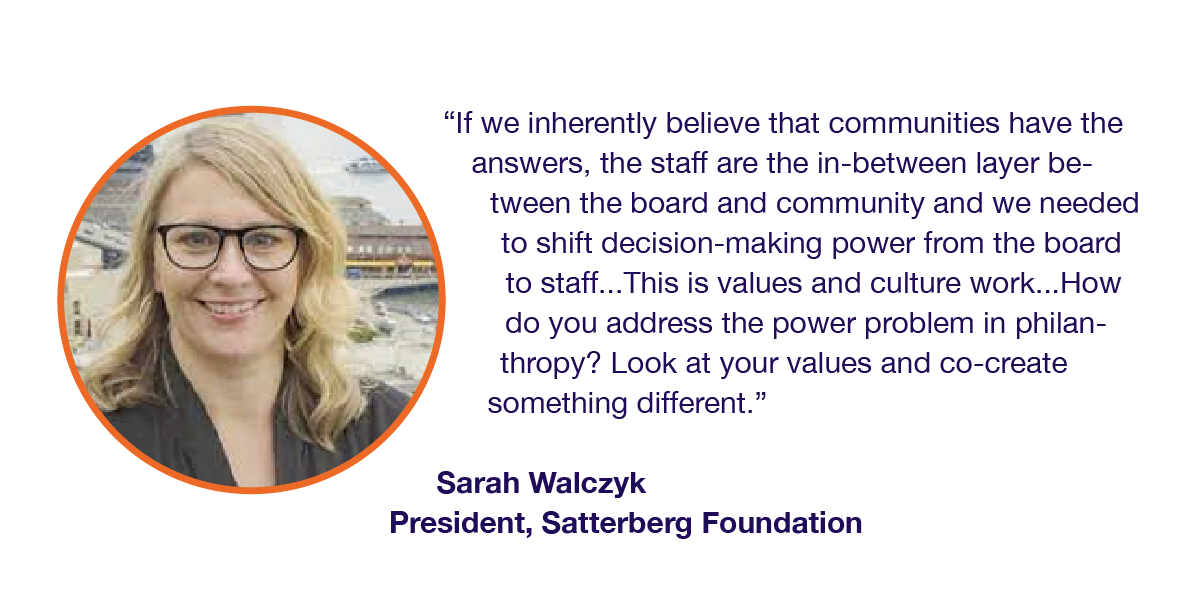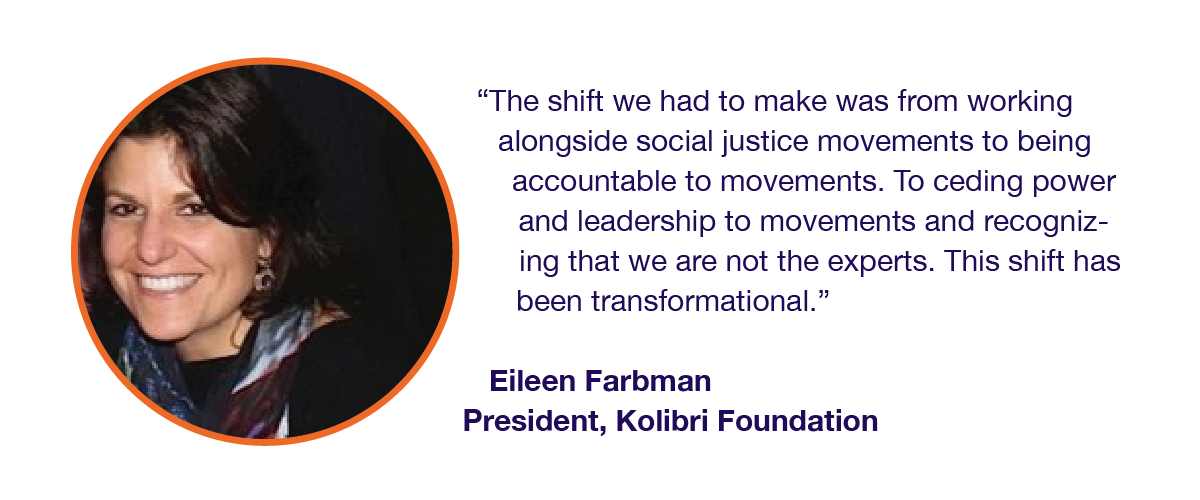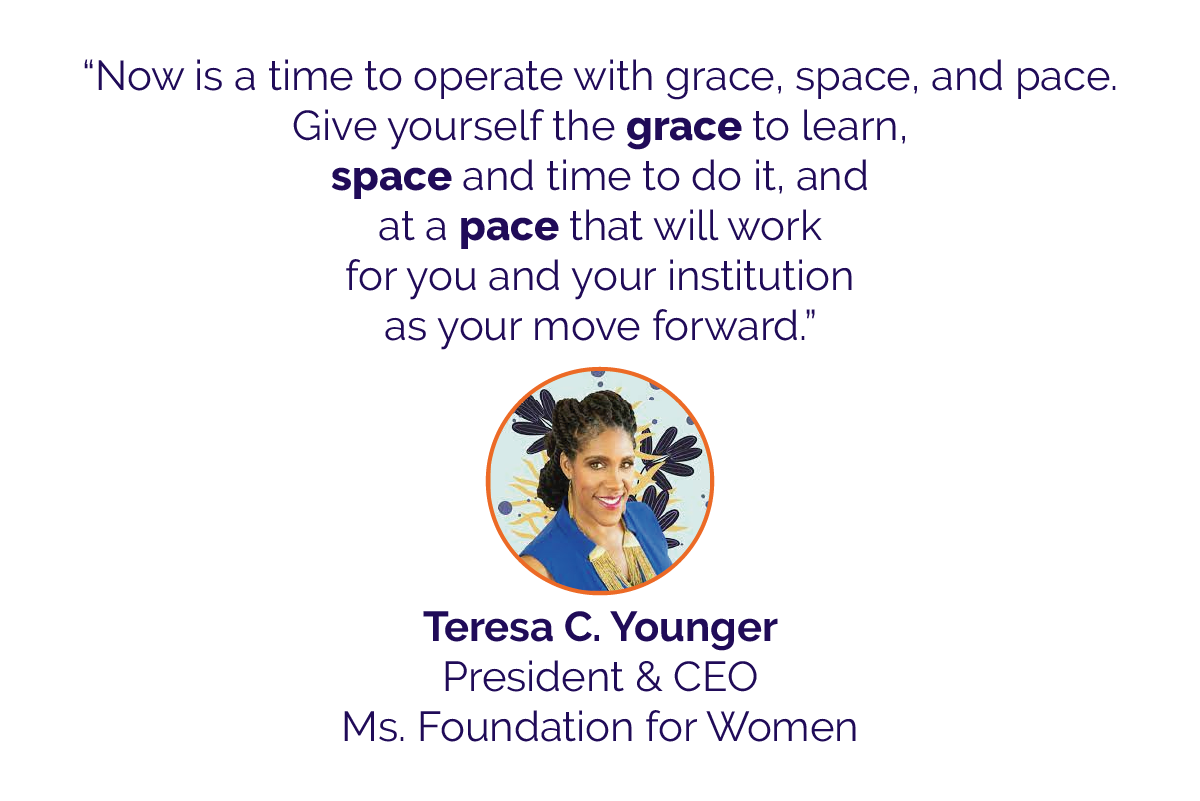It was a time for our sector to reflect on our past and adapt to create a more equitable future.
Why Reckoning?
The philanthropic sector has the opportunity to engage its power to dismantle the systems that stand in the way of a more just, equitable, and sustainable society. As our community endeavors to be accountable, we must examine the structures we want to address while working to shift our practices at an institutional and interpersonal level.
PNY Members Reflect on 2020
What are we listening for?
We cannot focus on large-scale change without first acknowledging the small details that shape us, individually and collectively, in our daily lives. Aracelis Girmay invited us to listen to the quiet details of our lives and the lives around us through her poem “You are who I love”. What do you hear? Power? Trust? Vulnerability? Emergence? Courage? Love? Grief?
Aracelis guided the Philanthropy New York community in creating our own “You are who I love…” poem through a waterfall of chat messages.
You are who I love...
My long-lost friends, you are who I love!
Gappy teeth and scrapes and bumps, laughter and tears, big hugs and small kisses, I love you mores, so serious so earnest so sweet, smells and tastes, and I love you more than anything
Love the wind in my hair
You are who I love baking bread for me
Outwardly curious and empathetic. you are not alone. I am not alone.
Your first time in the streets fighting for a new day.
Explaining the why’s
I love the new communities I discovered through zoom
Freedom, liberty, equality, and respect for others
You are who I love - you sold your funny paintings of horses on the street corner 30 years ago
You are who I love-- blunt and direct, yet tender in your desire to provide nourishment
You who comes bearing hot tea in the quiets
You are who I love you, who crossed an ocean to give me, who you have already loved before I came into being, Hope.
Activists and ancestors, guiding with knowledge of past, present, and future
Read the full Philanthropy New York community poem here.
In addition, what stories help us understand intersecting systems that create racial inequity? Gretchen Sorin, author of Driving While Black - African American Travel and the Road to Civil Rights, unpacks the complex history of freedom of movement. The invention of the car brought both opportunities for movement among Black communities and racialized violence and discrimination that we see today.
Want to dive deeper? Watch Gretchen and Ric Burns' PBS Documentary: Driving While Black: Race, Space and Mobility in America
How are we learning to shift power?
The multitude of crises in 2020 - and the sense of urgency to respond - pushed the sector to make practice changes that were once thought impossible at a large scale. Molly Shultz Hafid led a conversation to explore:
- How have you changed your thinking around practices you have firmly believed in and valued?
- What does it look and feel like to truly wrestle with questions of power and authority in our work? To give up unearned power and try to make it right?
- How can we expect more of ourselves and our institutions?
- How can we shift power, center relationships, integrate trauma-informed practices, and move toward more transformative work?
How can we take action?
Take action...through using your personal power
JaNay Queen Nazaire challenged us to contemplate what we would do if we had the opportunity to begin America again. She had us reflect on who we are as individuals, what roles do we play and what systems do we occupy? How do we use our power within our relationships?
“Once we understand that our beliefs, our mental models our mindsets drive our behaviors and the roles we play within the systems we occupy the next question becomes - are we using these roles to produce outcomes that truly benefit us all? It's imperative that enough of us step more intentionally and consistently into our positional power to create the America to which we aspire.... We all have power - formal power and informal power. Becoming aware of our power is a first necessary step. We have to stop distancing ourselves from the system. We are the operators of the system."
Take action...through leadership
Bianca Anderson and Monisha Kapila from ProInspire previewed the soon-to-be-published Leadership Model for Race Equity Impact. They explored questions we can ask ourselves and our organizations at every level of leadership.
- Leading Self: What parts of my perspective have been centered and supported in society that might not be other people’s experiences?
- Leading People: Are we addressing interpersonal interactions that reinforce racial hierarchy, exclusion, and bias by centering relationships?
- Leading Organizations: Are we are addressing norms, policies, and procedures that perpetuate white supremacy by aligning values?
- Leading Systems: How do we imagine systems and partner with others in our ecosystem to think differently about how that ecosystem should create outcomes?
To dive deeper, read ProInspire's Crises as a Catalyst: A Call for Race Equity & Inclusive Leadership.
Take action...through organizational change
Angela Park highlighted the key components of organizational work to transform philanthropic organizations from the inside out
- Clear/explicit framing and goals
- Strong, communicated rationale
- Revamp of policies and practices to embed equity
- Assessment of workplace culture - clarity about aspirational culture and behaviors
- Putting into practice tip: Create enough openness and safety so people can actually talk about organizational culture. Interrogate the “culture of niceness” in philanthropy. Define “nice” - what are the behaviors that define being nice? What are the impacts of those behaviors? Niceness vs. conflict-diverse.
- Management skills and accountability
- Putting into practice tip: You cannot manage an equity transformation without having very strong management skills - it’s a skill set, and you need to build accountability mechanisms for the managers and for how they hold others accountable Departmental, programmatic integration
- Departmental integration and competencies
- Foundational and ongoing learning curricula based on clear competencies
- Annual priorities and budgeting
- Clear success measures
To dive deeper, Angela Park shared Embedding Justice and Equity Key Components of Organizational Work and Organizational Equity Self-Assessment.
Take action...through grantmaking
Lori Villarosa guided us through key lessons informed by racial justice movement leaders and philanthropic change agents and clarified core components of moving your grantmaking from a racial equity lens to a racial justice lens.
Foundational work to bring a racial equity lens to grantmaking:
- Analyze data and information about race and ethnicity
- Understand disparities and the reasons they exist.
- Putting into practice tip: How much time do we spend really talking about why we think disparities exist? Working through this as teams to develop a shared understanding of disparities is a critical foundation to racial equity grantmaking.
- Looks at structural root causes of problems
- Names race explicitly when talking about problems and solutions
Racial justice lens to grantmaking adds four more critical elements
- Understand and acknowledge racial history
- Create a shared affirmative vision of a fair and inclusive society
- Focus explicitly on building civic, cultural, and political power by those most impacted
- Emphasize transformative solutions that impact multiple systems
To dive deeper, see the Philanthropic Initiative for Racial Equity's original Guide for Grantmaking with a Racial Equity Lens and recent Guide for Grantmaking with a Racial Justice Lens.

